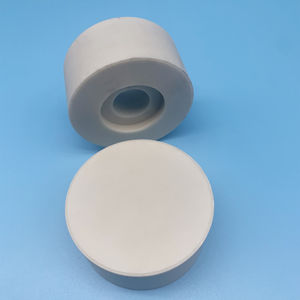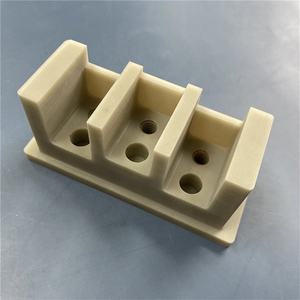Discover Premium Ceramic Products | Durability & Elegance United | Advanced Ceramics
PRODUCT PARAMETERS
Description
Overview of aluminum nitride ceramics
Aluminum Nitride Ceramic is an advanced ceramic material with aluminum nitride as the main component. It has been widely used in electronics, optics, and mechanics due to its unique properties.
Features of aluminum nitride ceramics
High thermal conductivity: Aluminum nitride ceramics have relatively high thermal conductivity, usually between 170-260 W/m·K, which makes it an excellent heat dissipation material. It is especially suitable for electronic devices that require efficient heat dissipation, such as substrate materials for power semiconductor devices.
Good electrical insulation: Despite its high thermal conductivity, aluminum nitride ceramics are excellent insulators of electricity, which can effectively prevent current leakage and ensure the safe operation of electronic components.
Low dielectric constant and dielectric loss: These characteristics make aluminum nitride ceramics very suitable for use in high-frequency circuits because it can reduce energy loss during signal transmission.
High temperature resistance: Aluminum nitride ceramics can maintain structural stability and strength at extremely high temperatures. Its melting point is about 2800°C, so it is suitable for applications in high temperature environments.
Low thermal expansion coefficient: Compared with semiconductor materials such as silicon, aluminum nitride has a lower thermal expansion coefficient, which means it has better dimensional stability when the temperature changes, which helps improve packaging reliability.
Corrosion resistance: Aluminum nitride ceramics have good chemical stability to most molten metals and are not easily oxidized or corroded, allowing them to perform well in harsh environments.
High mechanical strength: Although not as hard as some other types of ceramic materials, aluminum nitride ceramics still provide enough mechanical strength to allow them to be used in many structural applications.
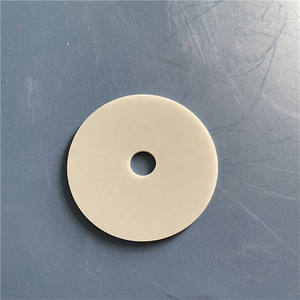
(Low Dielectric Constant Aln Aluminium Nitride Ceramic Substrate Plate)
Specifications of Low Dielectric Constant Aln Aluminium Nitride Ceramic Substrate Plate
Low Dielectric Consistent Aluminium Nitride (AlN) Ceramic Substratum Plate supplies high-performance services for sophisticated electronic applications. The product includes a low dielectric constant in between 8.5 and 9.1 at 1 MHz. This home lowers signal delay in high-frequency circuits. The dielectric loss is marginal, usually listed below 0.0003 at 10 GHz. It ensures effective signal transmission in RF and microwave tools. Thermal conductivity varieties from 170 to 200 W/m · K. This enables reliable warmth dissipation in power electronics. The substratum runs reliably in temperature levels from -50 ° C to 500 ° C. It keeps security under thermal cycling and severe conditions.
Home plate has a high quantity resistivity exceeding 10 ¹⁴ Ω · centimeters. It avoids existing leak in high-voltage settings. Flexural stamina measures 300-400 MPa. This guarantees mechanical durability throughout handling and processing. The coefficient of thermal expansion (CTE) is 4.5-5.5 ppm/ ° C. It matches well with semiconductor materials like silicon. This minimizes stress-induced failures in bound assemblies. Surface roughness is controlled to 0.4-0.6 μm Ra. It supports specific deposition of thin-film circuits.
Standard density alternatives array from 0.25 mm to 3.0 mm. Custom sizes are available for specialized designs. The substratum works with thin-film and thick-film metallization processes. Usual coverings include gold, silver, and copper. It resists chemical rust from acids and alkalis. The material is halogen-free and abide by RoHS standards.
Applications consist of RF/microwave circuits, LED product packaging, power components, and laser diodes. It matches 5G interaction systems and aerospace electronic devices. The AlN ceramic plate is machined utilizing laser cutting or accuracy grinding. Tight resistances of ± 0.02 mm are attainable. It integrates seamlessly into multilayer circuit layouts.
Product packaging choices consist of vacuum-sealed trays or foam-lined boxes. Taking care of guidelines suggest making use of cleanroom gloves to prevent contamination. Storage conditions require a completely dry environment below 30 ° C.
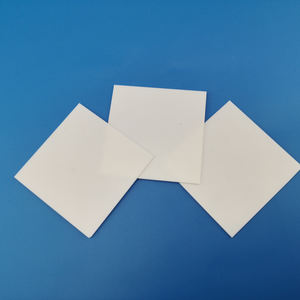
(Low Dielectric Constant Aln Aluminium Nitride Ceramic Substrate Plate)
Applications of Low Dielectric Constant Aln Aluminium Nitride Ceramic Substrate Plate
Reduced dielectric constant AlN aluminum nitride ceramic substratum plates are essential in advanced electronics. These products take care of high frequencies and manage warm well. Their reduced dielectric consistent lowers signal loss in high-speed circuits. This makes them excellent for RF and microwave tools.
AlN substratums are used in 5G communication systems. They sustain much faster data transfer with minimal disturbance. Their thermal conductivity helps dissipate warmth from high-power components. This stops overheating in base stations and antennas.
Power electronics take advantage of AlN ceramic plates. Electric lorries and renewable resource systems depend on them. They operate in high-voltage atmospheres while keeping circuits secure. The low dielectric constant guarantees efficient power transfer. Warm from power modules is quickly gotten rid of, boosting tool life-span.
LED illumination systems utilize these substratums for much better thermal management. High-power LEDs generate significant warm. AlN layers spread warmth uniformly, preventing hotspots. This preserves brightness and shade consistency over time.
Aerospace and protection applications require products that perform under severe problems. AlN substratums run accurately in high temperatures and harsh environments. Radar systems and satellite communications use them for signal quality and resilience.
Semiconductor manufacturing uses AlN plates in wafer processing. Their thermal stability makes certain uniform home heating throughout deposition and etching. This reduces defects in silicon chips. The low dielectric building lessens cross-talk in largely stuffed circuits.
Medical tools like MRI devices and laser systems utilize AlN substratums. They provide electric insulation and thermal control in delicate tools. This makes certain accurate diagnostics and risk-free operation.
Automotive radar and sensors depend on these materials for accuracy. AlN plates take care of high-frequency signals in ADAS (Advanced Driver Support Solution). They boost feedback times in crash avoidance and flexible cruise ship control.
Research study remains to increase their applications. Emerging fields like quantum computing and progressed robotics explore AlN substrates for their one-of-a-kind properties. Their role in next-gen electronic devices is growing as modern technology demands greater efficiency and dependability.
Company Introduction
Advanced Ceramics founded on October 17, 2014, is a high-tech enterprise committed to the research and development, production, processing, sales and technical services of ceramic relative materials and products.. Since its establishment in 2014, the company has been committed to providing customers with the best products and services, and has become a leader in the industry through continuous technological innovation and strict quality management.
Our products includes but not limited to Silicon carbide ceramic products, Boron Carbide Ceramic Products, Boron Nitride Ceramic Products, Silicon Carbide Ceramic Products, Silicon Nitride Ceramic Products, Zirconium Dioxide Ceramic Products, Quartz Products, etc. Please feel free to contact us.(nanotrun@yahoo.com)

Payment Methods
T/T, Western Union, Paypal, Credit Card etc.
Shipment Methods
By air, by sea, by express, as customers request.

5 FAQs of Low Dielectric Constant Aln Aluminium Nitride Ceramic Substrate Plate
Low dielectric constant AlN aluminum nitride ceramic substrate plates are specialized materials used in electronics. They offer high thermal conductivity and electrical insulation. Here are five common questions about them.
What is AlN ceramic substrate plate used for? These plates are used in high-frequency electronic devices. They work in circuits needing efficient heat dissipation. Applications include LED modules, power semiconductors, RF components. The material helps reduce signal loss at high frequencies.
Why does low dielectric constant matter? The dielectric constant measures how a material stores electrical energy. A lower value means signals travel faster with less energy loss. This is critical for high-speed communication systems like 5G networks. It improves device performance in applications requiring precision.
How does AlN handle high temperatures? AlN has excellent thermal conductivity. It moves heat away from components quickly. This prevents overheating in devices like lasers or power amplifiers. The material stays stable at temperatures up to 1000°C. It does not warp or crack under thermal stress.
Is AlN reliable in harsh environments? AlN resists chemical corrosion and moisture. It performs well under extreme temperatures and mechanical stress. This makes it suitable for aerospace, automotive, and industrial equipment. The material maintains its properties over long periods.
How does AlN cost compare to other ceramics? AlN is more expensive than alumina ceramics. It is cheaper than beryllia ceramics. The higher cost comes from advanced manufacturing processes. The price is justified for applications needing top thermal and electrical performance.
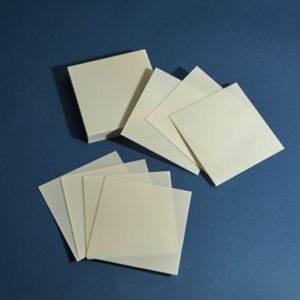
(Low Dielectric Constant Aln Aluminium Nitride Ceramic Substrate Plate)
REQUEST A QUOTE
RELATED PRODUCTS
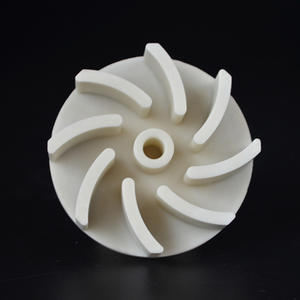
Sintyron High Purity Insulation 180W Aluminium Nitride Aln Ceramic Rod Tube Bushing
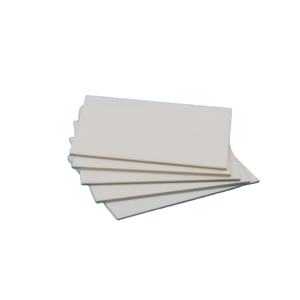
Advanced Ceramics Refractory Custom AlN Tubes Aluminum Nitride Ceramic Tubes
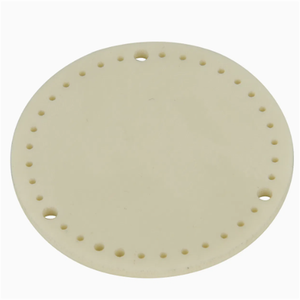
AlN/aluminum Nitride Ceramic Crucible
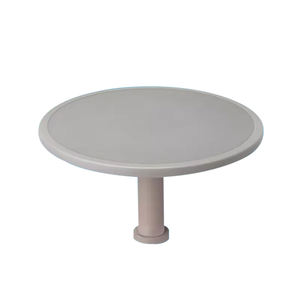
Hot Ceramic Products AlN Ceramic Aluminum Nitride Powder Aluminum Nitride Ceramic
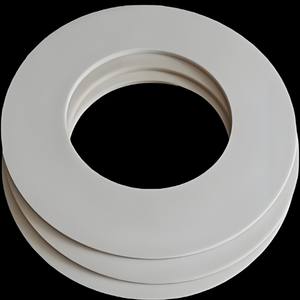
High Thermal Conductivity Double-Side Polished High Purity Customized Aln Substrate Aluminum Nitride Ceramic Substrate
